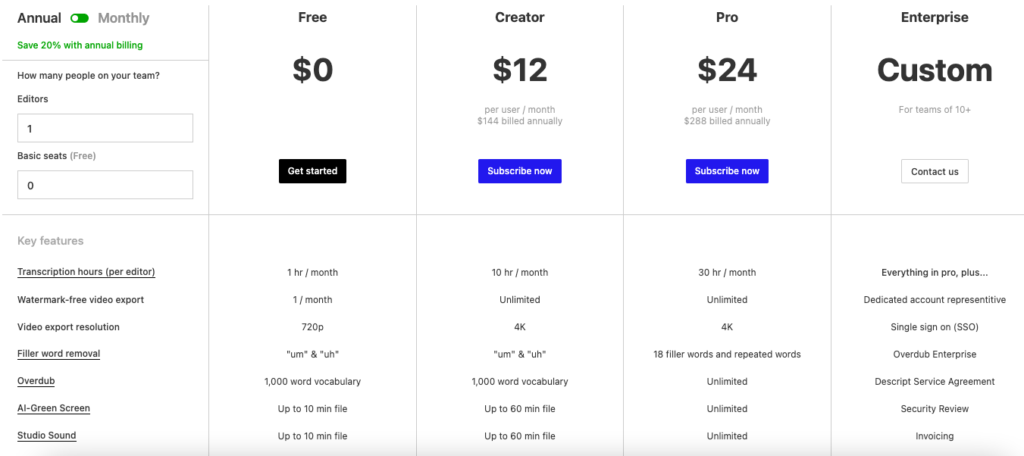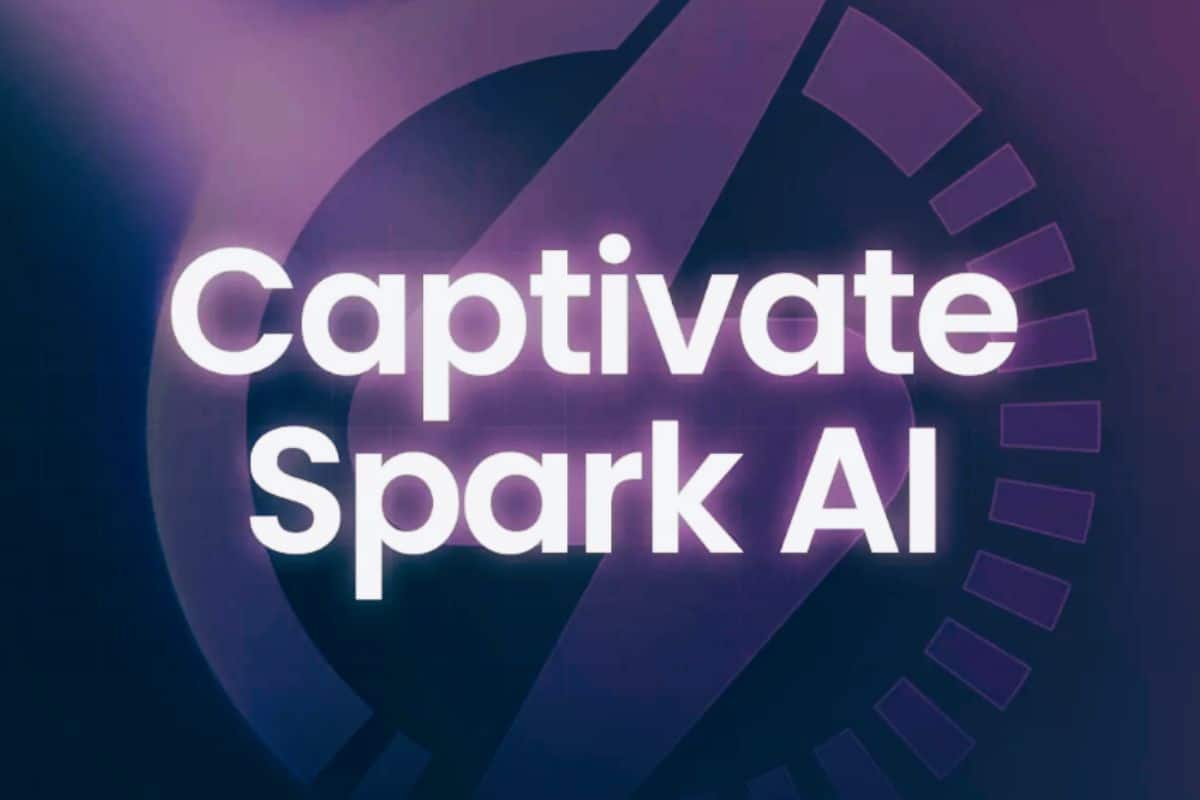
Descript: The Audio Editing Tool Every Podcaster Needs
Editing is an essential part of the podcasting process. It’s the stage where you fine-tune your audio, add music, and make sure everything sounds just right before publishing.
But editing can also be a time-consuming and challenging task, especially for those new to the podcasting world. There are some statistics that even go so far as to suggest that editing can take 3-4 times longer than it took to record an episode in the first place.
That’s a lot of time; particularly when you’re an entrepreneur or business leader and you’ve got other projects to handle.
Because, let’s face it, not everyone is in the position to hire out their podcast management.
That’s where Descript comes in.
Descript is a powerful audio and video editing tool that can simplify the editing process and make it more accessible to podcasters of all levels.
In this blog post, we’ll take a closer look at how podcasters can use Descript, its features, and some pros and cons of using the tool. Whether you’re a seasoned podcaster or just starting, Descript could be the editing tool you’ve been looking for to take your podcast to the next level and save you A LOT of time in the process.
What is Descipt?
Descript.com is a powerful audio and video editing tool that allows you to edit audio and video content as easily as editing a document.
With its intuitive interface, Descript.com offers a range of features that can help podcasters and video content creators streamline their workflow, including transcription, editing, and collaboration tools.
You can upload audio or video files to the platform, where they are automatically transcribed into text. From there, you can edit the text to make changes to the audio or video, using the platform’s unique “text-based editing” feature.
This allows you to simply delete or modify words in the text, and those changes will be automatically reflected in the audio or video.
Descript.com also offers advanced features like noise reduction, automatic levelling, and multitrack editing, making it a comprehensive editing tool for podcasters and video content creators alike.
How much is Descript?
As of May 2023, Descript has 4 pricing plans, starting from $0 (free!) and ranging up to a customised plan for bigger organisations.
For most podcasters, though, the Free, Creator, or Pro plans should be sufficient, depending on how many transcription hours you want per month.
On the Free plan, for example, you get 1 hour of transcription per month. For The Lazy Girl’s Guide to Podcasting, where episodes are only 10 minutes long, this is more than what I need for the month.
However, if you’re wanting to transcribe and edit longer episodes (such as those in The Confident CEO Podcast), the Creator plan which offers 10 hours of transcription per month might be better suited to you.

Get started for Free in Descript >>
How can podcasters use Descript?
Podcasters can use Descript in a variety of ways. Here are a few examples:
Transcription
In my option, the only transcription service that can give Descript a run for its money it Otter.ai.
Personally, I’ve found that Descript’s transcriptions have a high rate of accuracy (bar my name, but I would never expect a transcription service to get ‘Verity Sangan’ anyway!!).
Descript’s transcription feature can automatically transcribe audio recordings into text, making it easy for podcasters to create written transcripts of their episodes.
These transcripts can be used for accessibility purposes, to create show notes or blog posts, or to make it easier to search for specific content within the episode.
Many podcast hosting platforms, including Buzzsprout, can even have you upload your transcript to your episode. Whilst not 100% necessary (a lot of podcasters don’t bother), having your transcript uploaded with your episode makes your audio more accessible to a wider audience and can help with SEO purposes.
Editing
For me, editing is really where Descript comes into its own.
Descript’s text-based editing feature allows podcasters to edit their audio as easily as editing a document.
You simply delete any sections of text that you don’t want and Descript will automatically edit the audio/video to remove this section.
No more editing using audio waves; it really could not be simpler.
This can save a lot of time and effort compared to traditional audio editing tools.
Collaboration
Descript’s collaboration features make it easy for multiple people to work on the same project simultaneously.
This can be especially useful for podcasts with multiple hosts or for teams that work together to create podcast content.
Noise Reduction
I haven’t used the Noise Reduction feature myself, but Descript has a Noise Reduction feature that can help clean up audio recordings and remove background noise, making the final product sound more professional.
Multitrack Editing
Descript’s multitrack editing feature allows you to edit multiple audio tracks at once, which can be useful for podcasts with complex audio setups.
It is also fantastic if you use Zencastr for your recordings where you will get an audio track per speaker for your episode.
Pros of Descript.com
Easy to use
Descript has a user-friendly interface and can be used on both Mac and PC platforms.
High-quality transcriptions
Descript’s transcription accuracy is amazing in my humble opinion, and the software offers a range of customisation options for transcription settings.
Powerful editing capabilities
Descript offers a range of editing tools, including the ability to edit text and audio simultaneously, remove filler words, and correct grammar and spelling errors.
Short-form video
In 2023, we all know that video is king. And thanks to TikTok, YouTube Shorts, and Instagram Reels, short-form video content is now more popular than ever.
Whilst you can make audiograms in Buzzsprout, it can be a little time-consuming getting your timings aligned to include the exact audio that you want.
Descript makes the process of creating short-form video content for platforms such as Instagram and TikTok incredibly easy. You can then use these clips to promote your podcast, making your repurposing content strategy relatively easy.
Cloud storage
If you work across multiple devices then you’ll understand the frustration of localised saving meaning that you can’t access your project on every device. We all know that I love Garageband, but if I’m editing a podcast episode, it can be a little irritating knowing that if I start editing on a desktop, I can’t continue on my laptop without saving and uploading the work to somewhere like GDrive or Dropbox.
Descript saves your work remotely in the cloud, meaning that you can access and work on your projects across different devices. It also automatically saves as you go; a God-send if your Wi-Fi can be a bit temperamental.
Collaboration features
Descript allows multiple users to collaborate on the same project, making it ideal for team-based projects.
For most podcasters, this might not be a necessary feature, but, if you have a host, VA, or anyone who works on your podcast with you, being able to collaborate in Descript and work together in real time could be a huge plus for you.
Cons of Descript.com
Limited free version
Like any free plan, Descript’s free version has some limitations, including a limited number of transcription hours and editing capabilities.
However, you do get quite a lot with the free plan, including:
- Unlimited projects
- 1 hour of transcription per month
- Detect 8+ speakers
- ‘Um’ and ‘Uh’ filter word removal
- Ability to create short-form video content and audiograms with ease
Transcription accuracy
Like any transcription software, Descript’s accuracy can be affected by poor audio quality or background noise.
Therefore, if you’re experiencing poor audio quality then it’s better and easier long term to look at your equipment and set-up and make adjustments there than it is to try and edit background noise and poor audio quality in post-production.
Limited features
Personally, I feel that for most podcasters who want an easy way to edit their episodes, Desript offers the perfect solution.
However, it’s important to remember that first and foremost, Descript is a transcription tool. Therefore, if you want more high-tech audio editing tools, you will probably want to look for a different tool.
Conclusion
If you’re looking for a tool to easily transcribe and edit your podcast episodes, and dramatically reduce your production workflow time, then I’d highly recommend checking out Descript.
You can get started for free before deciding to commit long-term.
Get started for Free in Descript >>





